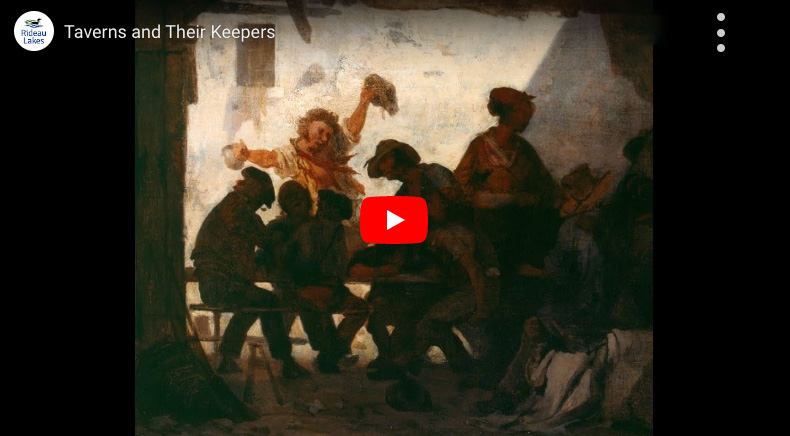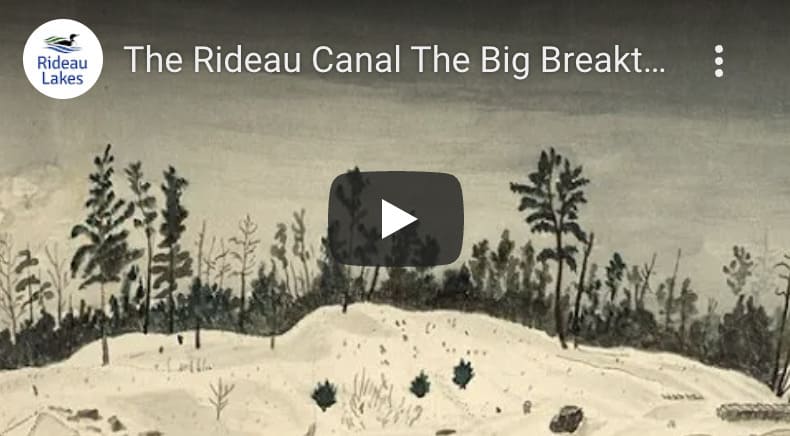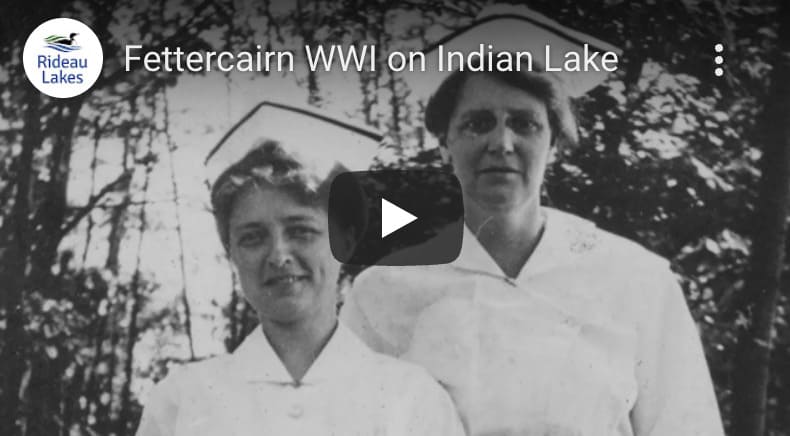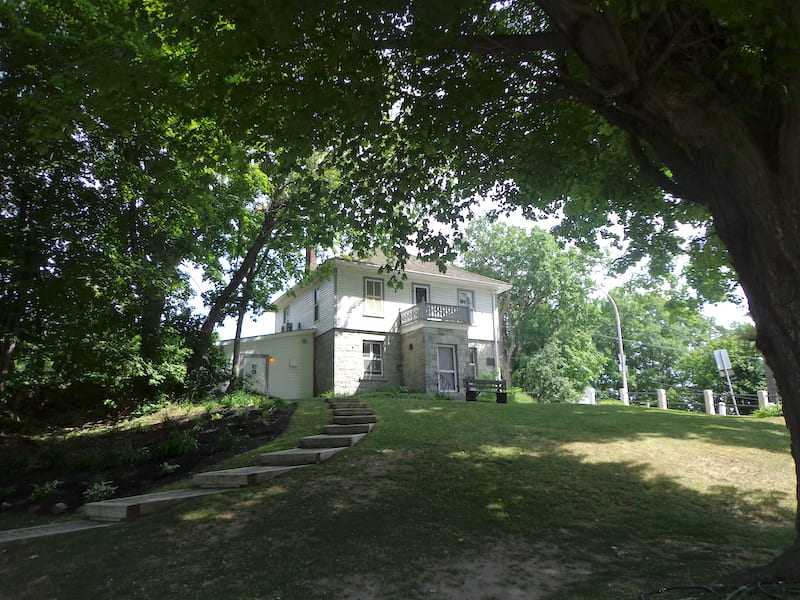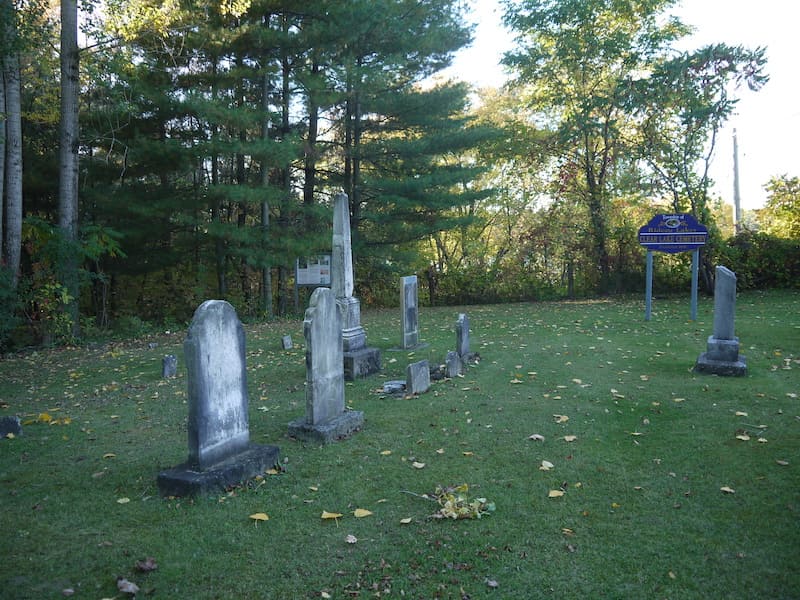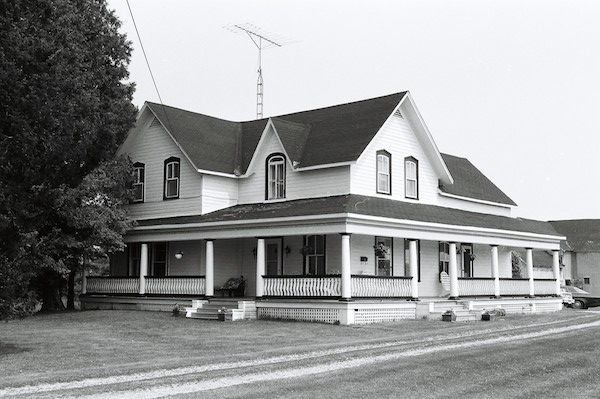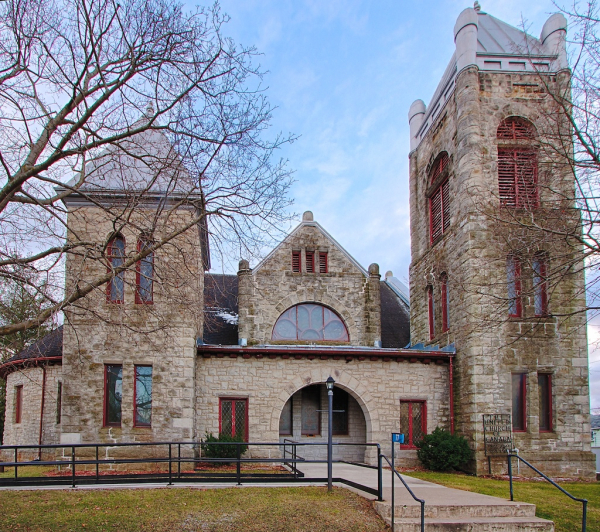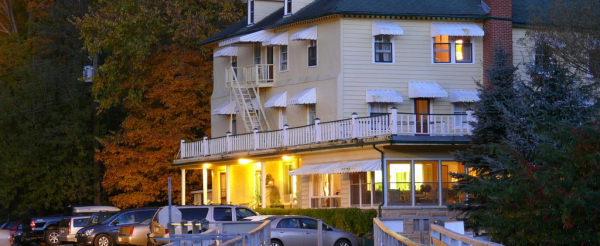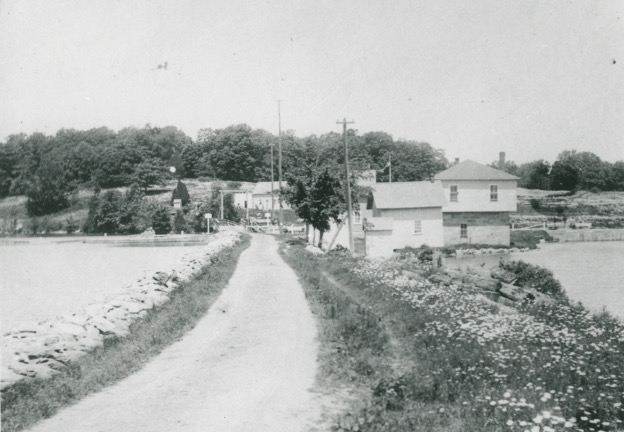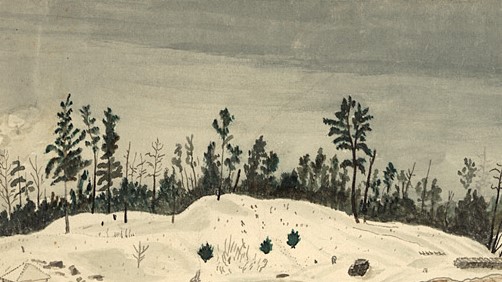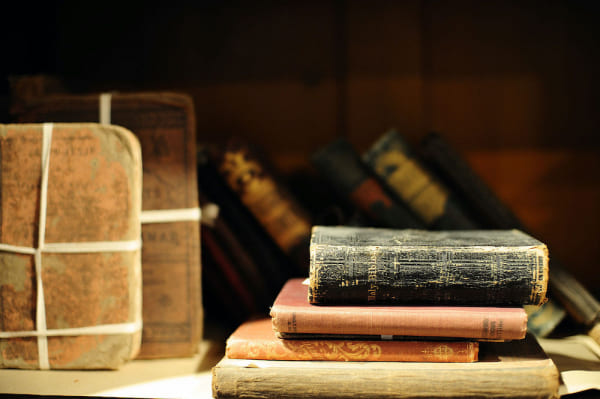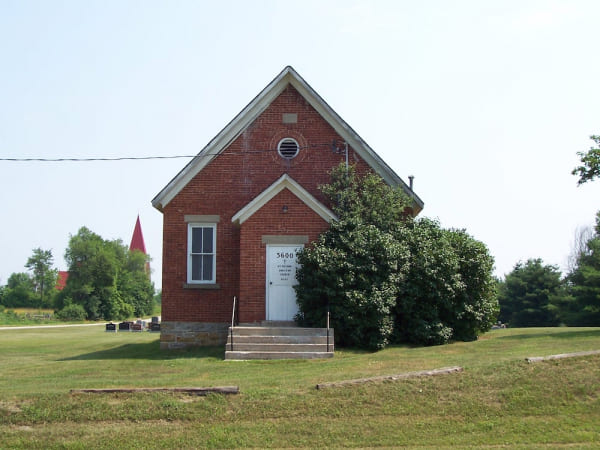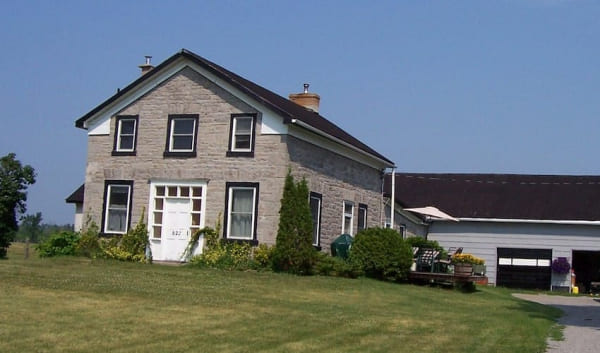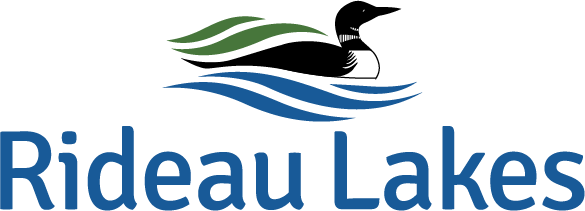
Discover (148)
Children categories

Villages (8)
Our Villages and Hamlets
Rideau Lakes is a community of Villages and Hamlets. Explore and learn about the landscape and the people. Each village and hamlet have a unique culture and story to tell. Whether you’re a visitor looking to discover your roots in the area, a family trying out an adventure on the water, or an urbanite seeking a safe and quiet, rural lifestyle… Rideau Lakes will find a place in your heart.
For thousands of years before European settlers arrived in what is now called Rideau Lakes, Algonquin speaking peoples, the Massasauga and proto-Hurons lived in these lands. Indigenous artifacts have been discovered around all of the lakes throughout this area, some that are more than 9000 years old. When the European settlers arrived, just over 200 years ago, the communities of Rideau Lakes were born.
The Clear Lake Road area started as a pre-canal settlement with mainly Irish-Protestant and some English settlers who were part of the Perth Military Settlements.
Vacations in 19th- and 20th-Century Portland and the Rideau Lakes
During a period of industrialization in the mid-19th century, Canadians began to move off the farm and into larger towns and cities. But this urbanization made city-dwellers long for nature and the wilderness experience. And with spare time, a bit of money and better transportation options, vacations became a possibility for the urban middle class. This film looks at the emergence of the concept of the middle class vacation in the late 19th and early 20th centuries, and the significance to Portland and Big Rideau Lake. Portland made the transition from being a commercial centre to a hopping hub of recreation. This seamless transition, and the popularization of owner-operated motorboats, undoubtedly played a significant role in the continued use and preservation of the Rideau Canal.
Yours Truly, Clifford Pennock
In early 20th century Elgin Ontario, Clifford Pennock was a much beloved figure in his community. But he is also remembered today for his photographs. Using a handheld camera and glass-plate technology, he left a vast collection of images, both as an amateur and a professional photographer. He practiced at a time when camera technology was changing rapidly, and there was a great debate over what made a photograph an “artwork.” So, was Pennock a Pictorialist, a Documentarian, or a Realist photographer?
Taverns and Their Keepers
During the early settlement of the area that becomes the Township of Rideau Lakes, travel is difficult and people depend on taverns for shelter, as they travel through the wilderness. Taverns are also important gathering places for local community members. But, as sites with significant drinking, taverns often experience violence, giving rise to the Temperance Movement and then Prohibition.
The Rideau Canal: The Big Breakthrough
The construction of the Rideau Canal cost a great deal, not only in terms of money, but also in lives and time. Colonel John By's use of the Slackwater design helped reduce these costs and saved lives - the Big Breakthrough.
Fettercairn: WWI on Indian Lake
On Indian Lake, just north of Chaffeys Lock, in the Township of Rideau Lakes, is an island that came to have a hospital for returning soldiers from WWI -- The Great War. These soldiers suffered from PTSD, which at the time was called Shell Shock. Called Fettercairn, the hospital was established in the family cottage owned Agnes Etherington (nee Richardson).
Beverley Riots and a Death in Philipsville
In the years leading up to the 1837 Upper Canada Rebellion, the villages of Beverley (now Delta) and Philipsville were the sites of election violence that shocked Upper Canada. Electoral manipulation by the Lieutenant Governor of Upper Canada resulted in fighting between Tories and Reformers, and a death in Philipsville.
The historic settlement of California is located on the west side of Jones Falls in the Canadian Shield. Although there are pockets of soil for farming, the area is basically very rugged. The first question most people ask is about the origin of the name.
There are a lot of theories about why this historic settlement is called The Bush, but probably the best explanation is that it was in the “bush” – a wilderness area when the road was named. This part of historic South Crosby was one of the first settled areas in the township.
Oliver’s Ferry, now known as Rideau Ferry, is situated on a narrow channel between Lower and Big Rideau lakes on the Rideau Canal system. It is the narrowest crossing point between the locks at Poonamalie and Rideau Narrows. Today the village spans the crossing, and the south part is situated in Rideau Lakes township.
It has been determined that Bastard Township was first settled by Elder Abel Stevens who arrived from Vermont in the early 1790s. In 1794, he was granted land where he finally settled and named the community Stevenstown, now known as Delta.
Otter Lake, on the south shore of the Rideau waterway, drains into Otter Creek which meanders over ten miles to the Rideau River. The lake is situated on a limestone plain which formed the bed of the western part of the Champlain Sea from approximately 13,000 to 10,000 years ago.
Our Lakes
The Township of Rideau Lakes boasts 30 lakes in our municipality which provide our residents with outstanding scenic vistas, recreational opportunities, and an awareness of the environmental sensitivity that comes with having so many important surface water features in our area.
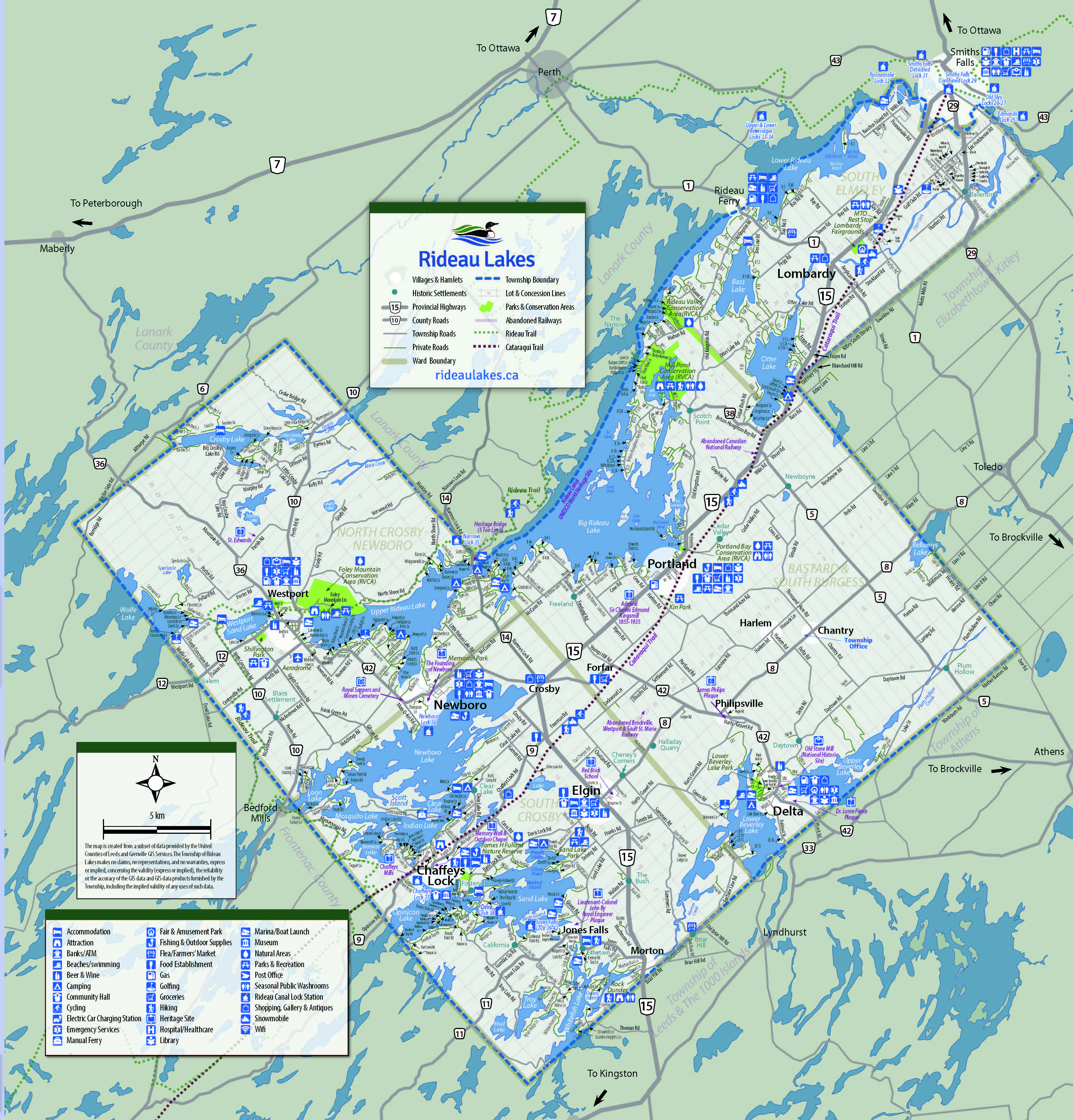 Click on the map to open in a lightbox or click the link to open in a new window
Click on the map to open in a lightbox or click the link to open in a new window
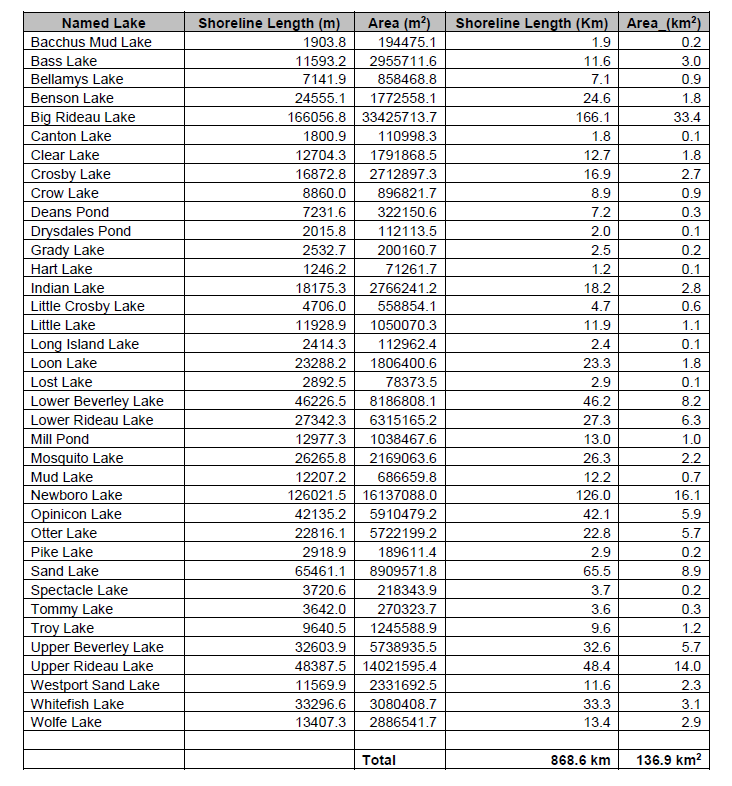
Source: Rideau Lakes Township aquatic and terrestrial breakdown – prepared by Chris Czerwinski (RVCA, 2022)
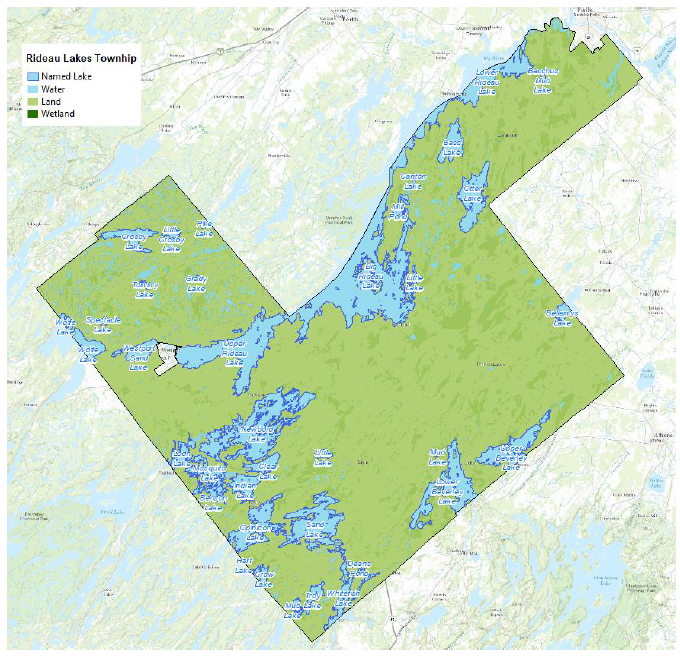
Above: A simple view of Rideau Lakes Township aquatic and terrestrial landscape (based on mapping from: https://geohub.lio.gov.on.ca/datasets/mnrf::ontario-hydro-network-ohn-waterbody/about). Open water wetlands in this map are mapped as “water”.
Blair(s) Settlement, also known as Centreville, was named for the large Blair family whose homes dotted Concession 9, which later became Perth Road and Country Road 10.
By 1806, the land that is now North Crosby and Newboro Ward had been surveyed and divided up into 10 concessions by 27 lots. It was called North Crosby Township. What became Salem was on the western edge, near the boundary with what is now Frontenac County. It saw its first settlers in the late 1820s.
More...
The name “The Narrows” identifies the narrow point between what are today the Upper Rideau and Big Rideau Lakes. Before the Rideau Canal was built in the 1830s, the entire stretch of water was called, simply, Rideau Lake. At that time, the Narrows were referred to as the “Upper Narrows”, to distinguish them from the “Lower Narrows”, at what is now Rideau Ferry.
The lakes and rivers in the Township of Rideau Lakes offer great fishing opportunities. Species caught along the length of the Rideau Waterway include Largemouth Bass, Smallmouth Bass, Northern Pike, Lake Trout, Yellow Perch, Black Crappie, Muskellunge, and Walleye.
Get an Ontario fishing permit and outdoors card and check the rules about fishing seasons (see below) before dropping a line.
The Township of Rideau Lakes has an incredibly rich heritage, especially along our waterways. The first surveys were done in the late 1700s with settlers arriving soon thereafter.
For a great selection of heritage photos, see Lakes and Islands, Times Past - The shared digital histories of Rideau Lakes and Leeds and the Thousand Islands.
Programs & Partners
Rideau Lakes offers a variety of establishments from fine dining to food trucks. Experience an elegant dinner at the Stagecoach Inn Restaurant in historic Newboro after shopping at Kilborn’s destination store or have a shore lunch prepared by Stirling Lodge on Newboro Lake. Try the licenced waterfront patio overlooking Big Rideau Lake at The Galley Restaurant in Portland, or meander to little cafes and chip wagons as you explore the quaint villages and small communities in Rideau Lakes. Click here for the Leeds-Grenville business directory of listings for Rideau Lakes.
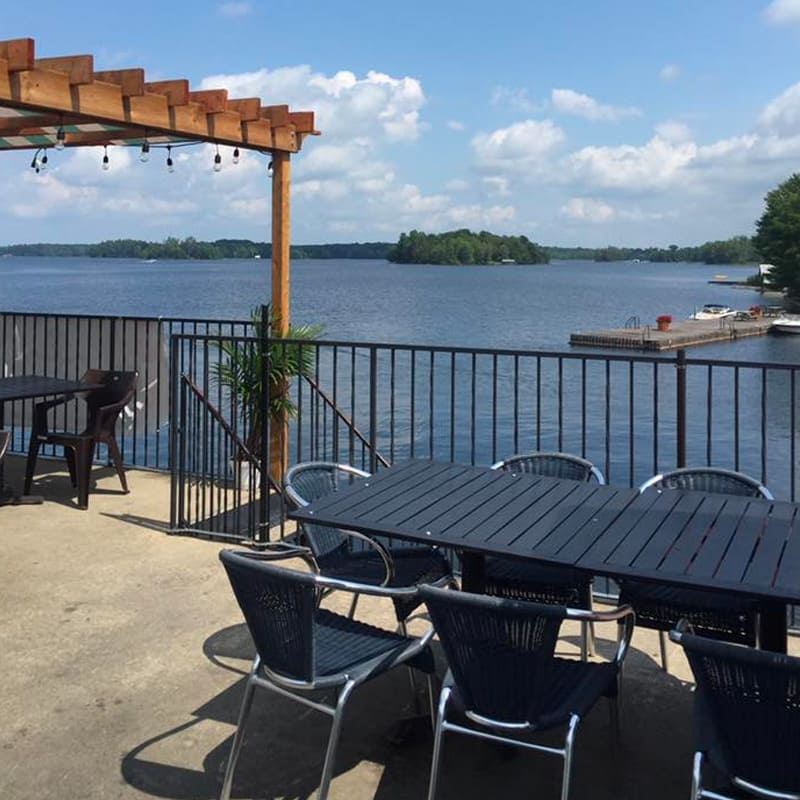
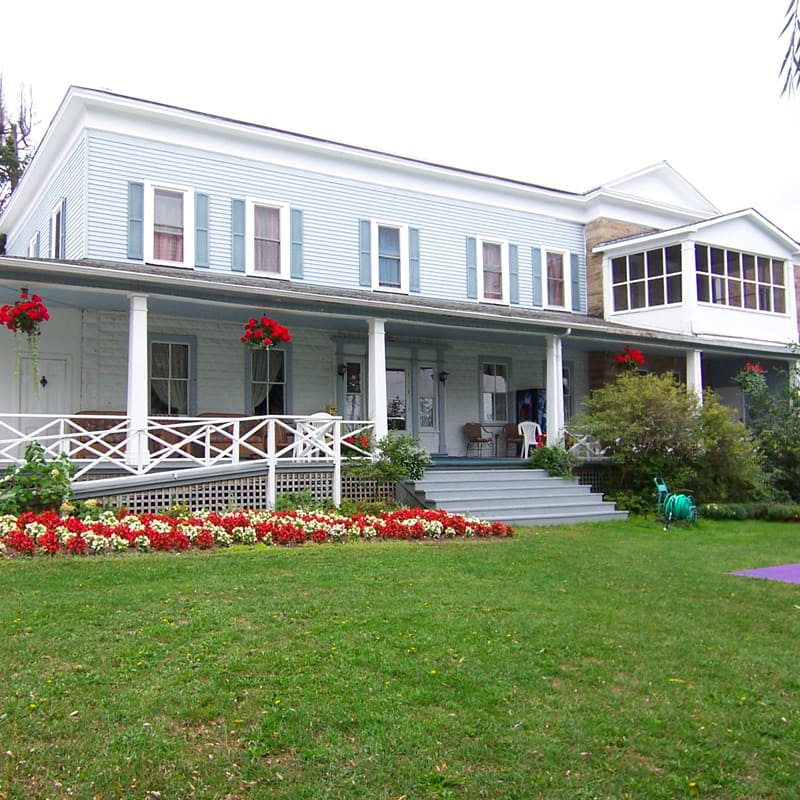
Hours of Operation
Monday to Friday
8:30 a.m. to 4:30 p.m.
After-Hours Road Emergency
1-877-798-5725
Portland Transfer Station
4427H Old Kingston Road, Portland
1-800-928-2250 ext. 230
Open: Wednesdays & Saturdays
8:00am to 4:00pm





